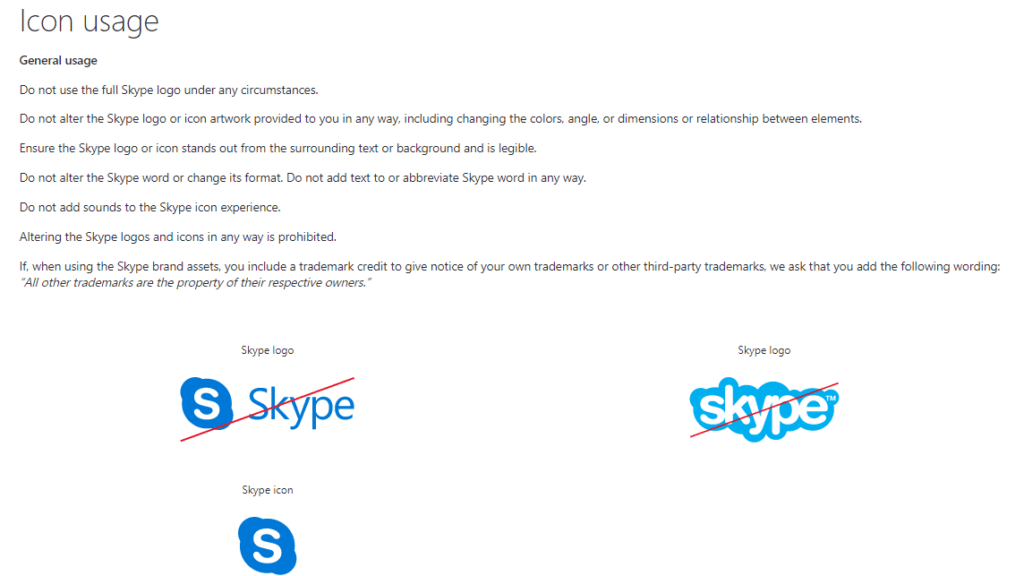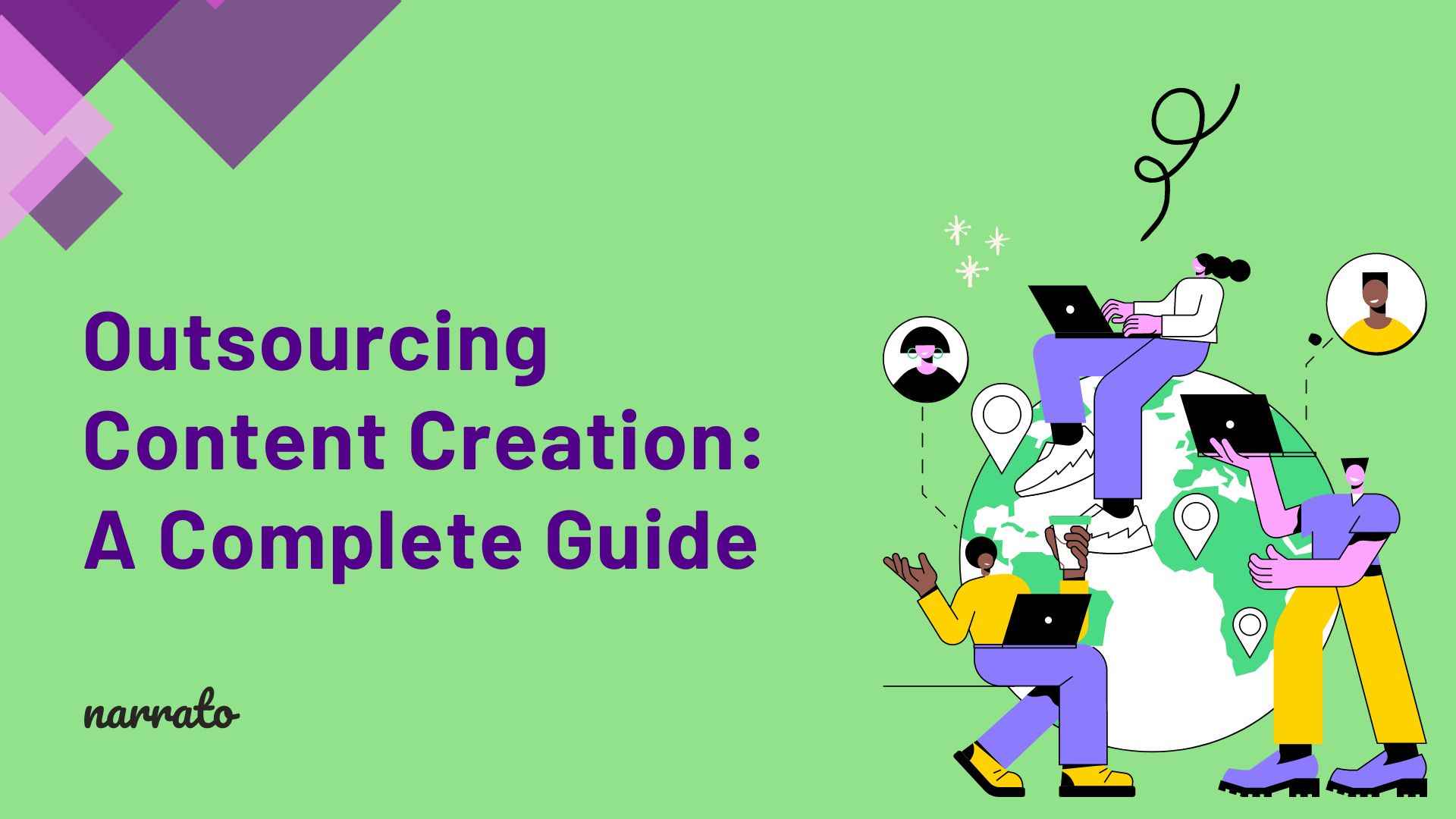Search engine optimization (SEO) and content marketing go hand-in-hand. You can’t get a coveted first page rank on a search engine results page (SERP) without consistently posting high-quality content. Engaging and informative blog posts, videos, or infographics can be time-intensive and a huge undertaking, especially for startups or small marketing teams.
So, what can you do?
You have three options: overwork your internal employees, forgo content marketing, or outsource content creation to experts. Around 30% of marketing professionals choose the latter in what Statista says is an upward trend.
Content outsourcing allows small businesses and teams to meet the demands of a robust content marketing strategy without exhausting resources.
The benefits include:
- More time for core business activities
- Faster content production processes
- Reliable content publishing schedules
- Fresh content ideas and varied points of view
- The expertise of experienced professionals
If all this sounds good, read on and learn how to outsource content creation without compromising quality and brand identity.
TL;DR Here’s a quick video summarizing this
- Define Your Content Strategy and Identify Your Content Needs
- Choose the Right Outsourcing Model
- Find and Vet Content Creators
- Establish Clear Communication Channels
- Create a Content Creation Workflow
- Review and Approve Final Content
- Publish and Promote Content
- Evaluate and Improve Strategy

Define Your Content Strategy and Identify Your Content Needs
A content strategy is a plan that guides the creation, use, and distribution of audio, visual, and written content. It outlines the business goals you wish to achieve, specifies how to use content, and identifies appropriate channels and content marketing metrics. Documenting these things ensures everyone involved is aligned and moving towards the same goal.
The key components of an effective content marketing strategy include the following.
Objectives
The goals you wish to achieve will inform the type of content you produce. For example, podcasts are a great way to increase brand awareness. You might want to master SaaS email marketing if lead generation for your automated time tracker is your goal. Or master video demos if it’s conversions you’re after. Other business goals include customer retention and SEO.
Target Audience
Here’s a golden rule in eCommerce or SaaS content production: Know your customers. Audience research and buyer personas help you understand who you’re creating content for. They provide data on topics that interest customers, content formats they prefer, and the communication channels they use. You need these to develop relevant content.
Style Guide
Brand guidelines ensure your content feels like it’s from the same source despite who creates it. Style guides outline written and visual content rules that define brand identity, including colors, voice, formatting, language, and images. And with style guide automation, you can apply your brand guidelines automatically, and check content for consistency.

In the above example, Skype outlines how to use the logo in simple sentences.
Distribution plan
In your content distribution strategy, you should map out all the marketing channels you use and the suitable content for each. For example, you could reserve LinkedIn paid ads to deliver the latest findings of your benchmark report.
Key Performance Indicators
Analytics and metrics show how well your content meets your goals. The specific measures you use depend on your content marketing strategy goals. If your goal is lead generation, you must include email opt-in rates in your metric toolbelt. Don’t forget financial metrics like customer acquisition cost (CAC), return on investment (ROI) or average revenue per user (ARPU) for paid campaigns. Without KPIs, you will waste resources on content that doesn’t work.
Check out this simple strategy template below.

It lets you describe your target audience, interests, content formats, preferred channels, and metrics to measure success.
Share your strategy (in part or whole) with content creators so they can adapt to your writing style and meet content demands. Include tools and resources such as content management systems, branded templates, editorial calendars, and contacts of relevant internal team members.
Your content strategy gives you a clear picture of what and where your content needs are. You can then decide what you can do in-house and what you can outsource. Let’s say the return on investment (ROI) of in-house long-form content is low, or maybe you’re looking for fresh takes on video production. These are areas where you can outsource content creation.
Choose the Right Outsourcing Model
There are two ways you can outsource content creation. One, hire freelancers or fractional marketers to augment your content marketing team. Two, hire an agency to manage your content marketing process. Each has its benefits depending on the available budget and skillset of the in-house team.
Let’s say your marketing budget allows for a strategist and editor. You would hire freelancers to create written and visual content, which your full-time employees would monitor to ensure brand consistency.
Hiring a reputable content agency becomes beneficial if you’re looking to outsource the entire content production process. They have teams of experienced strategists, content creators, editors, and SEO specialists. You can leverage their expertise, processes, and relationships. If you’re considering a long-term solution, think about staff augmentation vs outsourcing—staff augmentation might give you more control over your team, while outsourcing can simplify the process with external experts handling everything.
Whether you go with an agency or the freelancer option, share clear, detailed instructions on content expectations. If your content creators are located internationally, working with the Best Employer of Record can help manage legal compliance and streamline onboarding across borders.
Find and Vet Content Creators
Once you choose a suitable outsourcing model for your business, you can begin the talent search.
Here’s how to find and hire content writers and creators, depending on the outsourcing model you chose:
Agencies
A quick Google search for content marketing agencies will provide listicles from reputable sites like G2 and Upwork. With agencies, you have access to creators from various industries. When dealing with an agency your burden is significantly reduced as you will usually be assigned an Account Manager.
When you opt for the Managed Service on Narrato Marketplace for example, the Account Manager working with you ensures that the best-suited writers are matched to your project and that they deliver all the content on time. They also ensure that the content has undergone all the necessary quality checks before reaching you.

The biggest plus of choosing a content agency is that you don’t have to vet the writers because the agency already does this. The drawback to using a content agency is it can be expensive. If your budget is limited, this option won’t work for you. However, using high limit business credit cards can provide the necessary financial flexibility.
Freelancers
The other option is to work directly with freelancers. You can float your jobs on freelancer marketplaces like Narrato Marketplace, LinkedIn, Fiverr, or Freelancer.com. These work well for recruiting individual freelancers. But most of these sites have freelancers from all fields of work.
Narrato Marketplace has an advantage over the other platforms here as it is dedicated entirely to freelance writers. So hiring a good freelance blog writer or a copywriter who meets your standards is much easier here.
Narrato Marketplace has thousands of quality-vetted freelancer writers with expertise in different industries and niches. Also, your content order is automatically matched to the most-skilled writers in your niche by the smart algorithm.

The biggest benefit of hiring freelancers is they are easy to onboard, and you can hire them on an on-demand basis. However, when hiring them on your own you may have to be on your feet to ensure they deliver on time and the quality matches your expectations. This problem does not arise if you’re hiring from a well-managed freelancer marketplace like Narrato’s.
Apart from freelancer marketplaces, you can also solicit your professional network for recommendations. You may still have to vet referrals to verify they fit your needs.
Whether you go with freelancers or a content creation agency, you must assess and validate their experience. Use your content strategy and budget to guide your recruitment criteria. Are you looking for a content writer with SEO skills? Do you want the content writing service to have experience in a specific or regulated industry?
Talk to their previous clients. Ask to review their portfolio. Interview them, too. Below is a sample checklist of questions to ask outsourced content writers. But you can ask the same questions if you plan to tap into an agency instead:

Say you’ve found an engaging freelance writer, but their writing background is health and not marketing. Or a shortlisted graphics designer’s portfolio doesn’t have samples of the content you want to create. A test assignment will help you gauge if they are resourceful and adaptable.
Test pieces should be short. Ask potential writers for the first three paragraphs of a blog post or illustrators for an infographic redesign. Include a content brief with the assignment. Specify the tone they should write in, image parameters, and keywords they must include.

Establish Clear Communication Channels
Keeping lines of communication open is vital to a robust relationship with contract content creators. Most operate in a remote environment. If they have questions, they should be able to reach you or the content marketing manager.
There are several tools available to facilitate communication with outsourced partners.
- Content collaboration software like Narrato Workspace allows users to assign tasks, share briefs, and manage projects in real time from anywhere in the world. Narrato Workspace also lets you manage freelancer payments and store all the content in a central repository for easy access. That’s not all, if you are creating content in-house as well, Narrato has a host of AI writing tools and content planning tools to make the process faster and smoother.
- Video conferencing provides teams with face-to-face interactions for meetings, presentations, or interviews (which can be held using free video interview software). They are more efficient than back-and-forth emails and allow you to gauge facial expressions. Companies can integrate react video SDK or other video SDK to their platform based on their configuration of video conference camera equipment and software for a seamless video conferencing solution for their team.
- Instant messaging with tools like Slack is effective for quick, informal information exchange. Out-of-house creators don’t have to wait minutes or hours for an email response. They can get the answers they need quickly. You can even share files and documents easily.
- Emails work best for formal communication. They also offer legal protection under the Uniform Electronic Transactions Act and Electronic Signatures in Global and National Commerce Act. Just make sure you verify email addresses to ensure your messages reach the intended recipients.
During the onboarding process, specify which channels are available for use and their purpose. For example, let creators know they should use email for administrative communication like time-off requests or global payroll queries and maintain proper payment documentation through tools such as CVS paystub for better record management.
Create a Content Creation Workflow
A content workflow will help your content marketing team work effectively and efficiently. It defines the order in which team members should complete tasks, keeping the content creation process organized and transparent.
Below is an example of a content creation workflow on Trello.

This workflow visually tracks the progression of tasks through five stages. As a user completes a piece of work, they move the card to the next step of the content creation process.
Your workflow can be as simple as ‘To do,’ ‘doing,’ and ‘done.’ A more detailed workflow would have categories for,
- Ideation
- Creation
- Editing
- Revisions
- Approvals
- Successful publications.
Defining your workflow keeps your content team accountable. It enables content managers to identify bottlenecks quickly and take action. Additionally, with a linear integration of your dashboards and reports from various content data sets, you can visualize your information and generate nuanced insights into your outsourcing project. Finally, with cloud ETL tools, you can automate data integration, ensuring seamless consolidation of content metrics for better analysis.
Review and Approve Final Content
Even with professional writers and airtight instructions, you should review completed content.
There are several free and paid tools that help ensure you publish effective and high-quality content every time. SEO software like Frase helps optimize content for search results. Plagiarism checkers search for duplicated content. Editing and grammar checker tools ensure correct grammar and punctuation.
But you’re not only looking for grammar mistakes that slip through the cracks.
Around 88% of customers say authenticity is an important deciding factor when selecting brands to support. Outsourcing content creation increases the risk of inconsistent and off-brand messaging. Therefore, you need an in-house editor to ensure adherence to brand guidelines.
Does the brand’s voice come through? Are the images from approved sources? Brand consistency across all content may not seem as important as the content itself. However, customers will notice when pieces of content are off-brand.
Publish and Promote Content
Content marketing is only successful when it reaches the intended audience. Yet only 12% of marketers believe their content targets the right customers.
You can cast a wide distribution net with the right content promotion strategies, ensuring your target audience sees your content. Below are critical components for effective content publication and promotion:
Buyer personas
Buyer personas are handy tools for identifying the types of content and communication channels your ideal customers engage with. If your customers prefer video, repurpose your content as Instagram reels, YouTube shorts, or other video types. If they engage with email more than social media, promote content with newsletters.
Keyword research
Incorporating the right keywords drives organic traffic to content pages. The more traffic you get, the higher your rank on SERPs.
Influencer marketing
Influencers can be critical components of your digital marketing funnel. They are compelling content promoters. With influencers, you can gain access to thousands of targeted customers in one relationship. When SEMrush published an article about expert insight on content marketing, they created Twitter posts from the expert’s quotes.

Tagging the experts in social media posts drove their followers to the content page.
Other distribution channels include paid advertising, guest blogging, and co-marketing.
Evaluate and Improve Strategy
Your content marketing strategy has a section that defines measures of business success. These allow you to monitor and track the performance of outsourced content.
The content marketing metrics you should track include
- Traffic – how many people visit your content pages
- Click-through rate – how many people click links to your website
- Time on page – how long visitors stay on your website
- Bounce rate – how many people leave after viewing the landing page
- Search rank – where your content pages rank for keywords on the SERPs.
Evaluating content marketing metrics shows how well your outsourcing process works and identifies content you should replicate or improve.
Wrapping up
Content marketing is an effective way to attract and engage targeted customers. However, many small business owners and teams don’t have the resources to create their own content. Fortunately, they don’t have to forgo the benefits of content marketing. Outsourcing content creation is a viable option.
When you outsource content creation, you not only save time (and money), you can leverage the experience and expertise of content professionals, ensuring excellent content.
This guide shared eight tips to help you get the most out of contract creators.
The key takeaway is managing content quality. A clear content strategy will ensure every piece of content is on-brand. Also, keep lines of communication open. It is better to answer questions during the production phase than to rework content later.
Good luck!

Author Bio
Nico is the founder of Crunch Marketing, a SaaS content marketing agency. The company works with enterprise SaaS clients, helping them scale lead generation globally across EMEA, APAC, and other regions.





